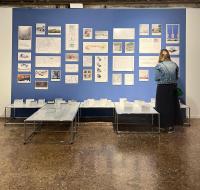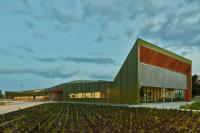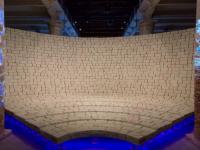Maple and Azalea Garden of Hangzhou Botanical Garden
Hangzhou, Zhejiang Province, China
Location: Hangzhou, Zhejiang Province, China
Client: Hangzhou Municipal Bureau of Landscape and Cultural Relics Administration
Area: 1.6ha
Design time: 2011
Completion time: 2012
Award: 2014 BALI (British Association of Landscape Industries) National Landscape Award
Hangzhou Botanical Garden was founded in 1956. Being in superior geography location and with good conditions for plants growth, it has become one of the most important botanical gardens in China.
On a gentle slope, Maple and Azalea Garden covers an area of 1.6 hectares. It had ever been a special garden in Hangzhou Botanical Garden, and has a history of over 50 years. However, due to excessive plants growth and poor management, its condition was not as good as before. Maple trees and rhododendrons were sheltered beneath the tall trees, and their growth conditions were bad and their quantities became less and less. Maple and Azalea Garden became more in name than in reality. In 2011, the client wanted to renovate the Maple and Azalea Garden, and to accommodate more rhododendron species and attract more visitors.
First, by removing some of other varieties of trees and shrubs, landscape architects create a better condition for the growth of maple trees and rhododendrons. The original circulation was just a path through the garden without any rest area and amenities. To accommodate more visitors, it is necessary to increase the paths and rest areas to attract people go into the garden and watch the plants of different species closely.
Considering the 6% average grade of the slope, landscape architects design a soft zigzag path system. This lengthens the tour route greatly. Small platforms and terraces are set in the places with relatively steep slope, and serve as rest areas with sitting walls and interpretive panels. The changing elevation between horizontal walls and the flowing down paths sketches out the subtle changes of the terrain. The low walls also protect rhododendron shrubs by avoiding the tourist’s crossing between the paths. The railings are elaborately designed in a distinctive style. Compared with the low shale wall, they form the contrast between hollow and solid, and increase the level of spatial complexity. Large numbers of different rhododendrons are planted along the paths, platforms and terraces. Visitors can appreciate the beautiful flowers from different viewpoints and get a unique experience.
Base on the site character and by using simple elements, such as paths, platforms, railing and interpretive boards, landscape architects create a unified landscape full of varying spaces, and give the garden a strong sense of genius loci.














